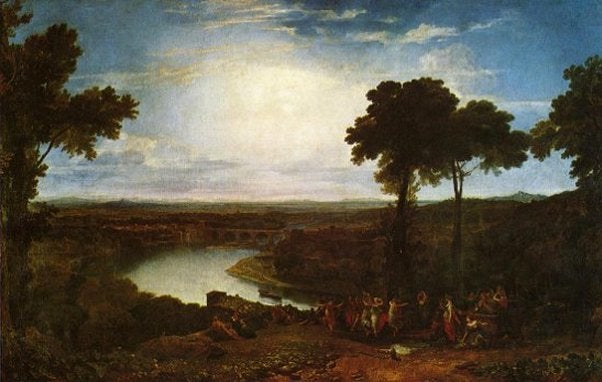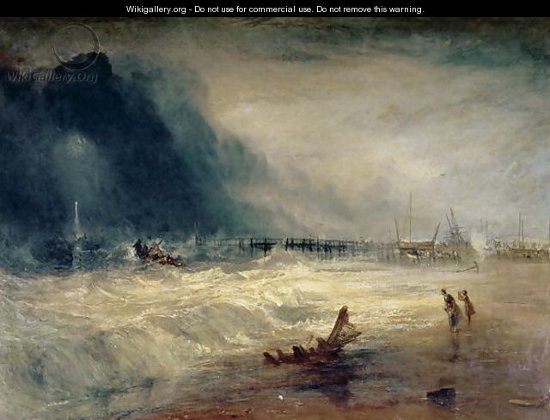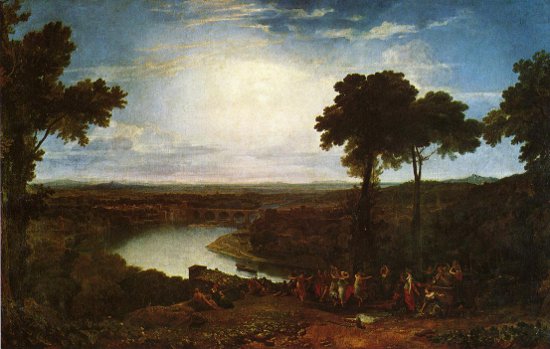
Very few scientists in history had the accomplishments of Michael Faraday (1791-1867). His discoveries in electromagnetism literally transformed this field from a mere curiosity into the powerful technology that ushered in the modern era.
Joseph Mallord William Turner (1775-1851) was one of the finest landscape and seascape artists in the history of art, and one that came even closer to abstract art than the impressionists who followed him.
Turner and Faraday became friends, probably after meeting in the house of the physician James Carrick Moore and his wife, who were very much in the social mainstream of London at the time. University of Birmingham Curator James Hamilton wrote superb biographies of both Turner and Faraday, which have provided us with insights into the relationship between the two men, and the subtle influence that the scientist may have had on the artist.
First, there was the technical aspect. Faraday gave Turner advice on how to best test the rate of discoloration and change of pigments in the very polluted air of mid-nineteenth century London. Second, Turner started to incorporate elements reflecting scientific investigations into his paintings. For instance, Turner's impressive painting "The New Moon," with its crisscrossing small waves, is very reminiscent of Faraday's description of his observations of the ridges produced by the wind on water or the sandy shore at Hastings. The same effect, which Faraday termed "crispations" -- the disturbances formed in one medium after being struck by another -- can be seen in the sea in another Turner painting: "Life-Boat and Manby Apparatus" (Figure 1).

Figure 1. "Lifeboat and Manby Apparatus going off to a stranded vessel making signal blue lights of distress," by Joseph Mallord William Turner. From http://www.wikigallery.org/wiki/painting_150918/Joseph-Mallord-William-Turner/Lifeboat-and-Manby-Apparatus-going-off-to-a-stranded-vessel-making-signal-blue-lights-of-distress-,-c.1831.
Faraday may not have been the only scientist to have influenced Turner's work. The famous astronomer William Herschel might have been another. In a groundbreaking lecture given to the Royal Society in 1801, Herschel was the first to describe the dynamic surface of the Sun as having a series of imperfections, including "nodules, corrugations, indentations and pores." Turner almost certainly heard about the lecture, since an exhibition including one of his paintings was being arranged at the same time in the same building in which the Royal Society used to meet. Then, in 1803, Turner painted "The Festival of the Opening of the Vintage, Macon" (Figure 2), in which he appears to have depicted the Sun with the types of details described by Herschel. In a society in which new, exciting ideas were bound to percolate, it is not inconceivable that Turner decided to change the way he was painting the Sun to correspond to the physical properties the astronomers were discovering.

Figure 2. "The Festival of the Opening of the Vintage, Macon," by Joseph Mallord William Turner. From http://uploads6.wikipaintings.org/images/william-turner/the-festival-of-the-opening-of-the-vintage-macon.jpg.
From a general cultural perspective, we could say that both Faraday and Turner were exploring the properties of light. Faraday was the first to show that magnetic fields could influence the behavior of light waves.* Turner, on his part, became known as "the painter of light" of his time because of his masterful use of brilliant colors. The scientist and the artist have incredibly enriched our understanding of nature and our emotional response to it.
_________________
*This phenomenon, now known as Faraday rotation, is not only used to great effect in modern astronomy, but was also the first step towards James Clerk Maxwell's demonstration that light is an electromagnetic wave.